This substack wasn’t supposed to become an auto review rag, principally because the quantity of cars I have unrestricted access to over any given period of time is finite. Yet, somehow, here we are getting right to the punchline:
Buy the Audi RS e-tron GT. And if you want to have largely the same experience minus 150 ft-lbs of torque that you’re not going to miss anywhere but a drag strip, buy the standard, non-RS model and save a considerable pile of money.
You can, of course, trust me completely as a respectable long-time advocate of electric automotive drivetrains.
This You?
Ah, you got me. I am Offensively Manual Guy. And considering that I swapped in my 991.2 GT31 to execute this blasphemy, I’m pretty sure I’m the Judas of offensively manual guys. But like Mr. Iscariot, the thing I have done leads directly to your impending salvation. For us to all go to heaven, the ICE engine has to die. Cars like the e-tron GT are going to get us there.
So, how did Audi manage to pry a rare Porsche out of my apparently cold dead hands? Friends, let me introduce you to Archimedes’ Lever.
How it Looks
In a word, pretty sexy. OK, two words.
The e-tron GT is kind of like an A7 without trying to be an A7. Let’s be honest, the A7 is trying really hard. And, OK, that swoopy 4 door coupe look doesn’t come without effort. Just ask the original Benz CLS. But here on the e-tron, aerodynamic and electric realities have intruded on the designers’ fever dreams and made the overall package cleaner and tighter. There are exceptions; the bustle in the rear screams “I am a programable light!” at unnecessary volumes whether it’s on or off.
On the other hand, if you thought Audi’s principal aesthetic sin was the constantly widening maw at the front, consuming more and more real estate year over year, guess what? Electrics don’t do grilles. Don’t need ‘em. Gauche.
Someone tell BMW, those kidneys are getting obscene.
On the outside, the RS trim has delivered some embellishments over the base. For starters, everything you expect to be silver is black. Text? Black. Audi’s four rings? Black. Rims? Black. This is fine, except that this example is also Audi’s metallic black (“Mythos”) which is very black. Similarly, the otherwise spectacular carbon fiber roof is drowned in black. The result is a Darth Vader level of blackout that may or may not be cool on your block. The dealer offered to tint the windows down to the legal minimum as well; I declined. We’re good.
There are detail bits worth talking about.
You may wonder how you see out the back of that little rear window. That’s the neat part, you don’t!
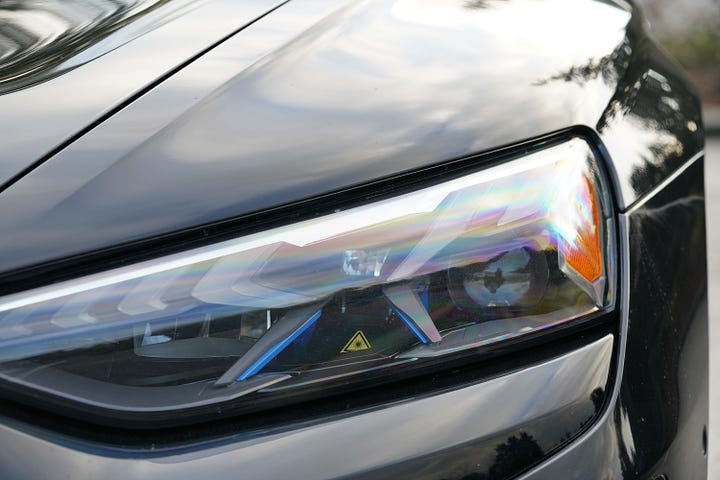
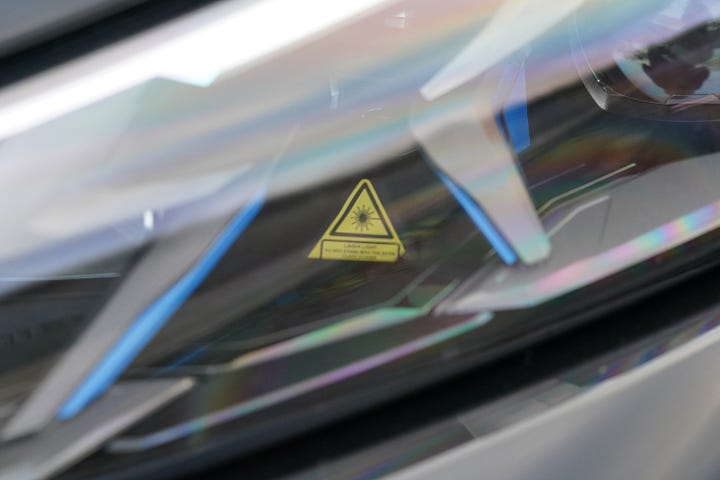
There’s a lot going on here. Matrix LEDs are standard, which means the camera in the windshield and the lights are playing their own little game of “don’t blind the traffic” while you’re cruising. On this model, we also have a spicy laser core complete with warning sticker that allegedly doubles headlight range if the computers agree no one is in the way. If all of this sounds complicated, I found a diagram from Audi that explains it all.
So that clears that right up. In use, the lights are bright, precise, and react very quickly to oncoming cars. Is it usefully better than steerable LEDs, adaptive xenons, or anything else in the last decade? Jury’s out at this mileage.
The orange brake calipers on our model here are Audi’s basic brakes on the RS trim, called “carbid”, which is a tungsten carbide layer over plain old iron. If this sounds similar to Porsche’s Carbide setup, you’d be correct - the e-tron GT is a platform twin with the Taycan. For many more thousands of dollars, you can have the ceramic brake setup common as an option in this market segment. This seems silly on a car that, under most circumstances, is braking with its electric motors to recover charge. Yes, they weigh less, but on a car that’s already over 5,000 lbs. Skip ‘em.
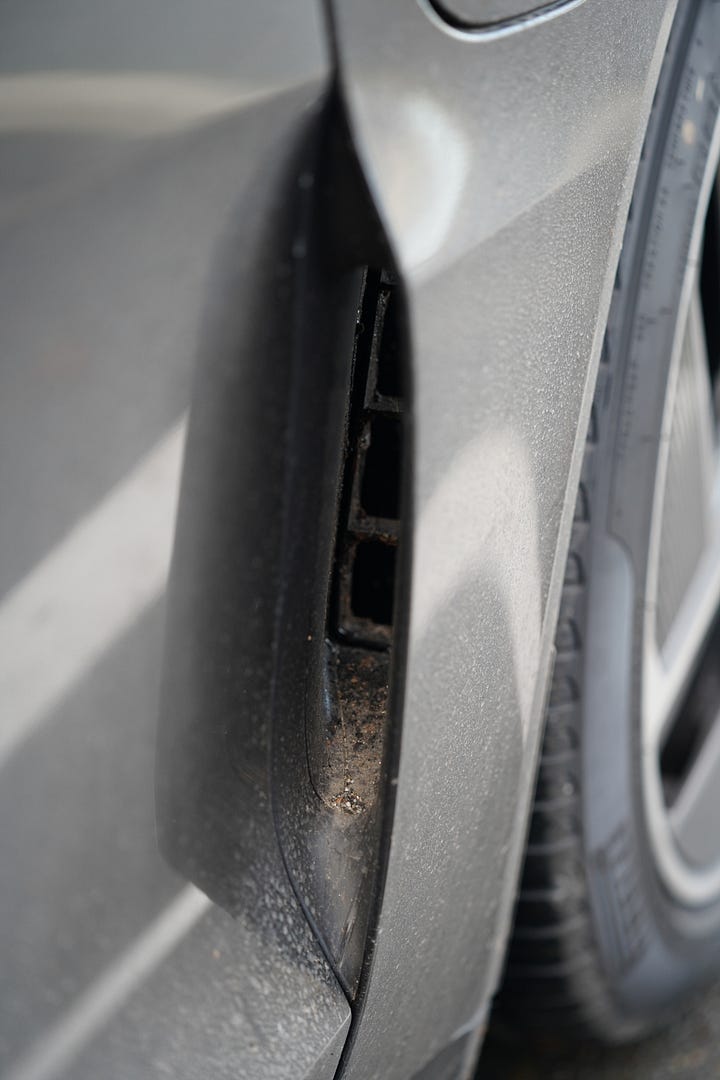
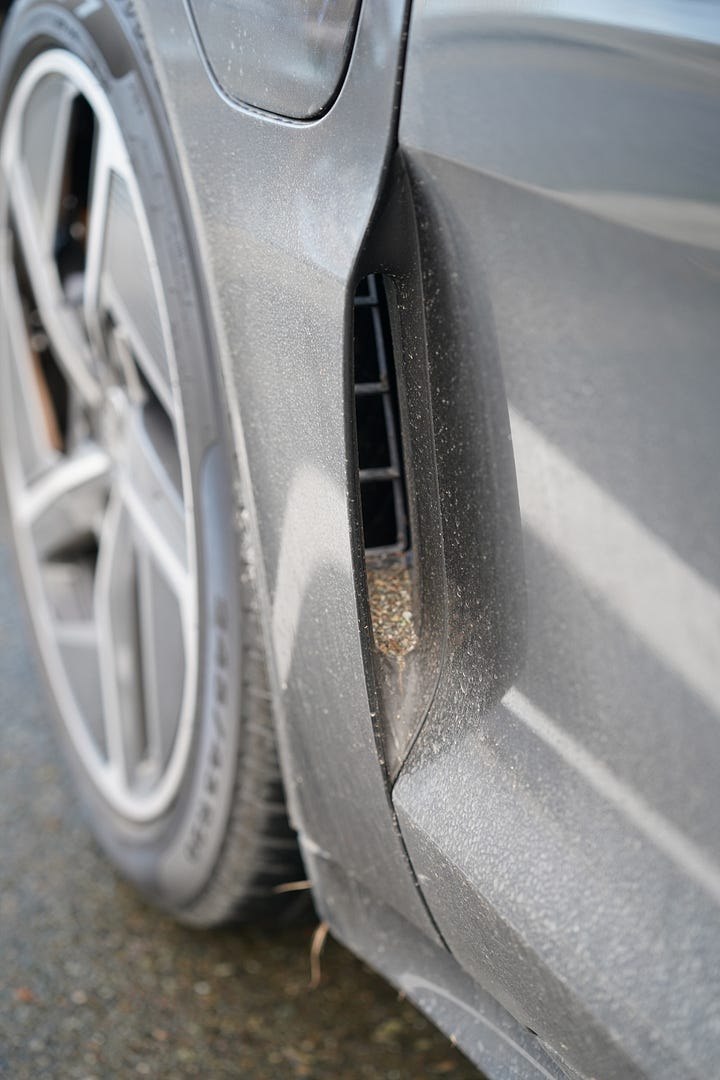
Some details make perfect sense from an aesthetic or aerodynamic standpoint, but are going to be fun (read: not fun) to live with. These ducts are allegedly used to manage airflow out of the wheel wells, but in reality they are Compost Catchers™️ and I will be using them to improve the soil quality of my garden in the coming months.
That New Car Smell
Step inside and let the aroma waft over you. Is that Dinamica, Audi’s new 70% recycled polyester interior material? Alcantara, the ticking time bomb of suede2 for car nerds? Nope, that’s tanned, dead cow. And I’ll be honest, no one’s surpassed the look and feel of dark automotive leather. The seats are nice (quilted, perforated, heated, cooled, and equipped with massage units), but the real star of the show is the flat-bottomed steering wheel, heated and wrapped in perforated Nappa. It feels amazing.
Moving to the center console we have Audi’s current design language which is shared across all the electrics. Everything is pleasing angles. The console and dash subtly curve to encase the driver, reminding everyone who ponied up for the right to press the buttons. And buttons there are!
Audi has eschewed the Tesla touch-sclusive model for interior control which other electric makers are marching toward for lack of better examples. And you know what? Thank fucking god. Touchscreens are a mess, both literally and figuratively. Even Porsche has taken the bait, equipping the top trim Taycans with not one but two infotainment touchscreens. On the e-tron GT, however, things you want to do frequently get buttons you can find without looking. Change driving mode, activate exterior cameras, rifle through your audio collection - all physical.
Aesthetically, we have a novel mix of matte carbon fiber and piano black acrylic where leather is inappropriate. It’s very pretty to look at until the first time you touch it. Owners of piano black anything know how fast fingerprints and smudges multiply. It took me 50 miles on the odometer before I was googling for lint-free detailing wipes. This will be a forever battle. Which is a shame, because you absolutely want those surfaces reflecting. Case in point:
Interior lighting is customizable, and there’s a ton of it, both subtle and obtuse, front and rear. You can set it across an abbreviated RGB gamut, but the real fun is letting it map to your Drive Select settings, which makes angry mode truly angry:
Let’s come back to some strong opinions on how all this gadgetry works together in a bit. You probably have a more pressing question - how it drives.
Fist of an Angry God
The RS is quick. It is astoundingly quick. That’s the electric gimmick, of course - just add current and get increasingly worrisome numbers. I have not had the chance to launch it in controlled conditions (or indeed any place where such a rapid launch from zero would be safe), but my onramp butt dyno feels very confident the quoted 3 second 60mph run is professional modesty.
Braking is just as fast, performed by the electric motors themselves or the carbide discs based on a number of factors. One pedal driving enthusiasts will be disappointed by the coasting regeneration levels available, but Audi has (correctly in my opinion) decided that the best place for the kinetic energy you already paid for is right where it is. Still, two taps of the paddle behind the steering wheel will make the brakes react to neutral throttle similar to, say, 3rd gear ICE engine braking.
Gonna be straight up honest; I expected I was going to hate the synthesized soundtrack Audi has engineered to accompany the e-tron’s drivetrain. I do not. I adore it. It’s like a team of audio engineers have a bunch of additive synths mapped to throttle and brake input, speed, drive mode, and setting. It sounds like that because that’s exactly what it is - a realtime synth working on your control inputs. It’s cool as hell and hearing it online does not do it justice.
The e-tron handles like a proper GT: solid, precise, and composed. Even with the suspension sitting at the top of its selectable ride height, body roll is minimal and rapid weight transfers cause little drama. Part of this is clever suspension design from an automaker with a decades-long motorsport pedigree, but part of it is also the reality of a thousand pounds of battery sitting at the bottom of the tub. The ride quality can be varied from “do not bother me with this pothole stuff” to “I really want to feel the asphalt seams”. It is an extremely wide dynamic range for one vehicle and far more dramatic than, say, PASM’s “hard and harder”.
Steering is assisted on the RS model by active rear-wheel steer. This is the most aggressive version of the technology I have driven. Contrasting to the 911 GT3 where it is reasonable to ask “is it even on?”, the e-tron’s steering suite maneuvers it at low speeds like a much, much smaller vehicle. Residential roundabouts that would have taken racing line calculations to clear in one move become high gee merry-go-rounds. Parking spaces that would require a second pass simply fold into line.
Ok, so, it goes, it stops, it turns. How does it feel? The synthesis of the e-tron’s driving dynamics is extraordinary. It simply feels too good to be believed. From the way you are cradled in the cockpit, to the sensory information presented to you, to the way the car reacts to what you ask of it - it is something that makes you want to find any excuse to hop out of the garage, even if for only a few blocks. That’s a rare thing.
But Can You Live With It
Answering that question requires two examinations; one of your range expectations, and one of your sensitivity to software quality and the push towards a wholly connected life. Let’s hit those in reverse order.
Audi really wants you to link your phone to this car. Audi really wants you to subscribe to ultra-premium services around this car. And Audi has not grown the software engineering chops necessary for those two desires to be an acceptable ask of the customer. While everything written in the screed above can be experienced with no mobile device present and no hint of always-on connectivity (and indeed, this is probably the best way to experience the car), there’s a whole world of features locked behind Audi’s buggy, high latency cloud infra. To wit, even finding out what premium bits I’m on the hook for is a non-deterministic exercise:
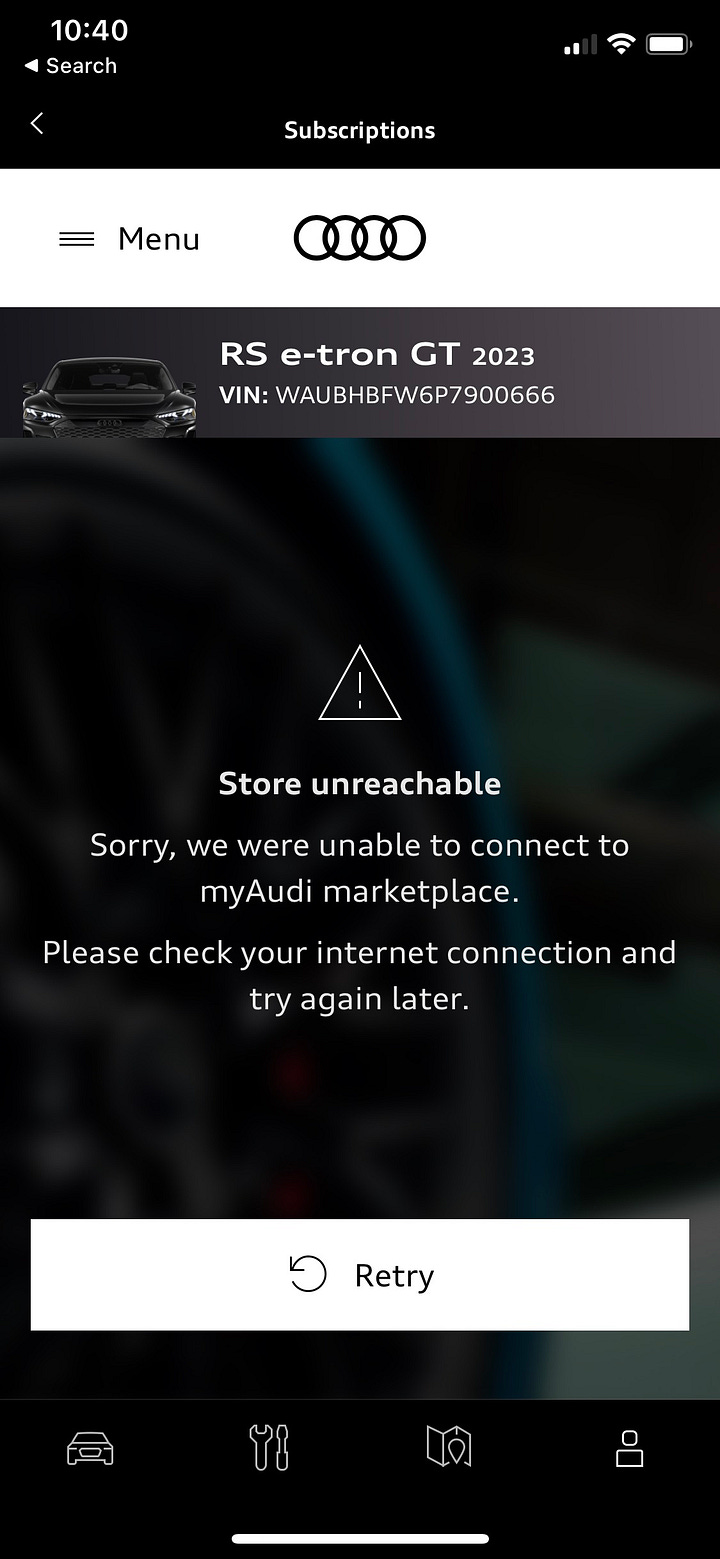

OK, maybe they’re having a bad day, let’s do something else, say, add my wife as a first class user to the car":


This is not acceptable in a 6 figure product. You can say “well, at least it’s not Tesla auto-driving into kids” but that’s hardly a dodge. Life safety affecting products need to work all the time, every time, down to the smallest function. If you don’t have the global infrastructure to make that true, you build it. If you don’t have the people to design that, you hire them.
Am I now excited to have the car park and unpark itself, or roll out of my garage and warm up unattended using only my mobile device? Absolutely not. No fucking way. These trials will expire unused.
On the range front, 230 miles, give or take, is not class leading. It’s the value Audi chose to provide the performance characteristics of the car over the life of the battery. Like other electrics, the true capacity of the battery is masked from you and you live in the defined middle, the edges creeping towards you in the center with use and hard charging cycles. Different manufacturers manage their weight-capacity-performance triangle differently, but with Mercedes offering mileage generously into the 400s on the EQS and Lucid crossing 500mi in real world testing, Audi’s choices seem strange.
Charging is easy. There are AC ports on either side of the windshield and a CCS DC port built into the passenger side. 0% to 80% happens in 20 minutes on a DC fast charging station capable of matching the Audi’s 270kW intake rating, and this is how Audi justifies the capacity gap. Home charging happens through a handsome unit3 supplied with its own carrying case and a range of cable and accessories. Hooked to a 50 amp circuit via 240 volt plug, it will fill the car overnight. There are charging programs and dials and doodads to maximize the value of your electrical charging dollar if this micromanagement is important to you; for me, I'm just glad to never hit a gas station again for anything but a guilty Diet Coke.
Let’s be honest, I’m not feeling very guilty about the drink.
OK Where Do We Stand
As a car: the e-tron GT, and specifically the RS, is exceptional. It is a unique experience in a growing sea of electric experiences. It feels amazing. You want to go. You want to stop. You want to be in it. You want to get out and look at it. You can’t really do all these things at once, so you want to constantly change it up. A car that makes you desire time to experience it is a rare bird.
As a product: the e-tron GT is flawed. Its market position does not justify all of its design choices. Its bolt-on suite of services are marred by poorly executed software. It costs an awful lot of money. It stands superior to most ICE options, but in a world comprised solely of electrics, you have to want its strengths and not mind its flaws.
I would buy this car again. I would not sign up for the extras nor link my phone to it. If you can afford this automobile, get one. Hell, get its platform partner, the Taycan, if you can find one in 2023. They’re made from the same stuff with different focuses.
Was it Worth It, Manual Guy?
Comparing the e-tron GT to the GT3 it replaces is difficult. They’re just not the same kind of thing. They’re meant to fulfill different needs on different surfaces with different assumptions. The Porsche doesn’t have to worry about battery heat and round-trip latency to auth servers in Germany; the Audi doesn’t have to worry about road surface temperature and lift-induced oversteer (which is exciting but I won't miss it).
The most useful comparison here is the delivery of the power. The GT3 settles the rear tires, squats, and builds like a banshee warming up her pipes. Everyone in the zip code knows what you just did. The e-tron, in contrast, flips on like a switch and stops when you run out of road, courage, or legal retainer dollars. There is substantially less drama, but substantially more spaceship noises. Is that better?
And this is the underlying gut check of the review. Is this mode of power delivery, common across most of the electric vehicle world, better? It is definitely more usable. There are no power bands to consider, no downshifts to execute. The lack of mechanical hijinks happening in the background make the onset and drop-off of power essentially telepathic.
Is it better? It is definitely more efficient. Somewhere between 20-40% of the chemical energy in gasoline gets turned into useful work on an ICE car, less than a power plant and far more dependent on driver behavior. EVs deliver 80-90% of their stored energy as motion and the process that made it in the first place is cleaner.
Is it better?
I don’t know. What I do know is that it’s the future, and it’s happening fast. Get in here, fam.
If you just screamed “what the fuck?!”, and that would a reasonable thing to scream, I need to refresh your memory on a sad but unavoidable fact: driving a track-adjacent car on California’s secondary roads is a sublime joy; driving it on Washington’s roads is an exercise in frustration and extreme discomfort. I am not a collector, and it’s going back to its native habitat, where it belongs.
I had an ‘03 BMW 330i with the ZHP package. 300 more RPM! 10 more horses! One of the weirdest features of the pack was an Alcantara steering wheel. Do not, under any circumstances, get an Alcantara steering wheel. Or maybe, I guess, plan on driving with gloves forever. Alcantara drinks skin oil and goes from fluffy treat to matted mess in surprisingly little time. Do, however, try to find an E46 330i ZHP.
The charger is free but ask your Audi parts guy what he wants a for the wall mounting bracket. Sit down first.









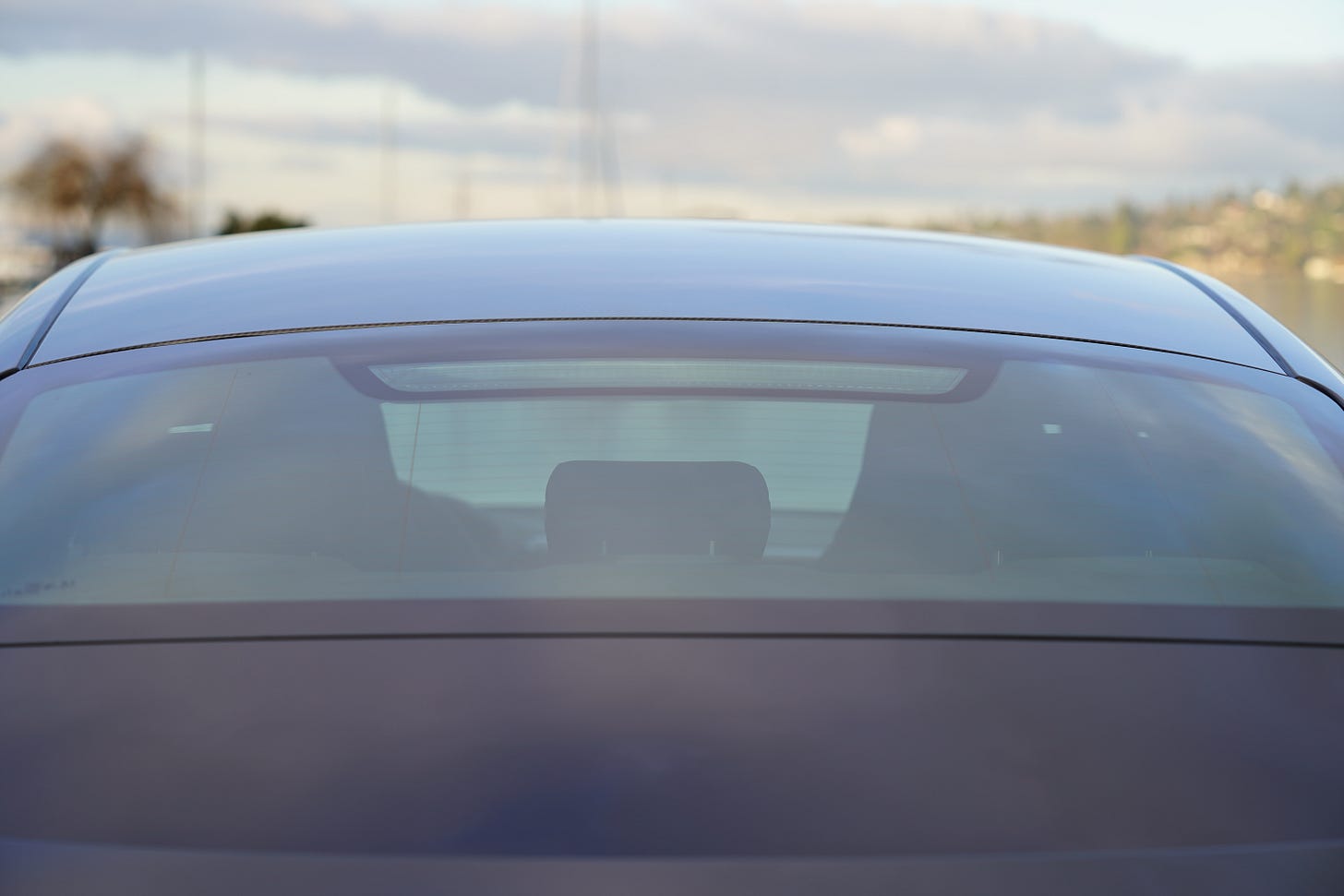
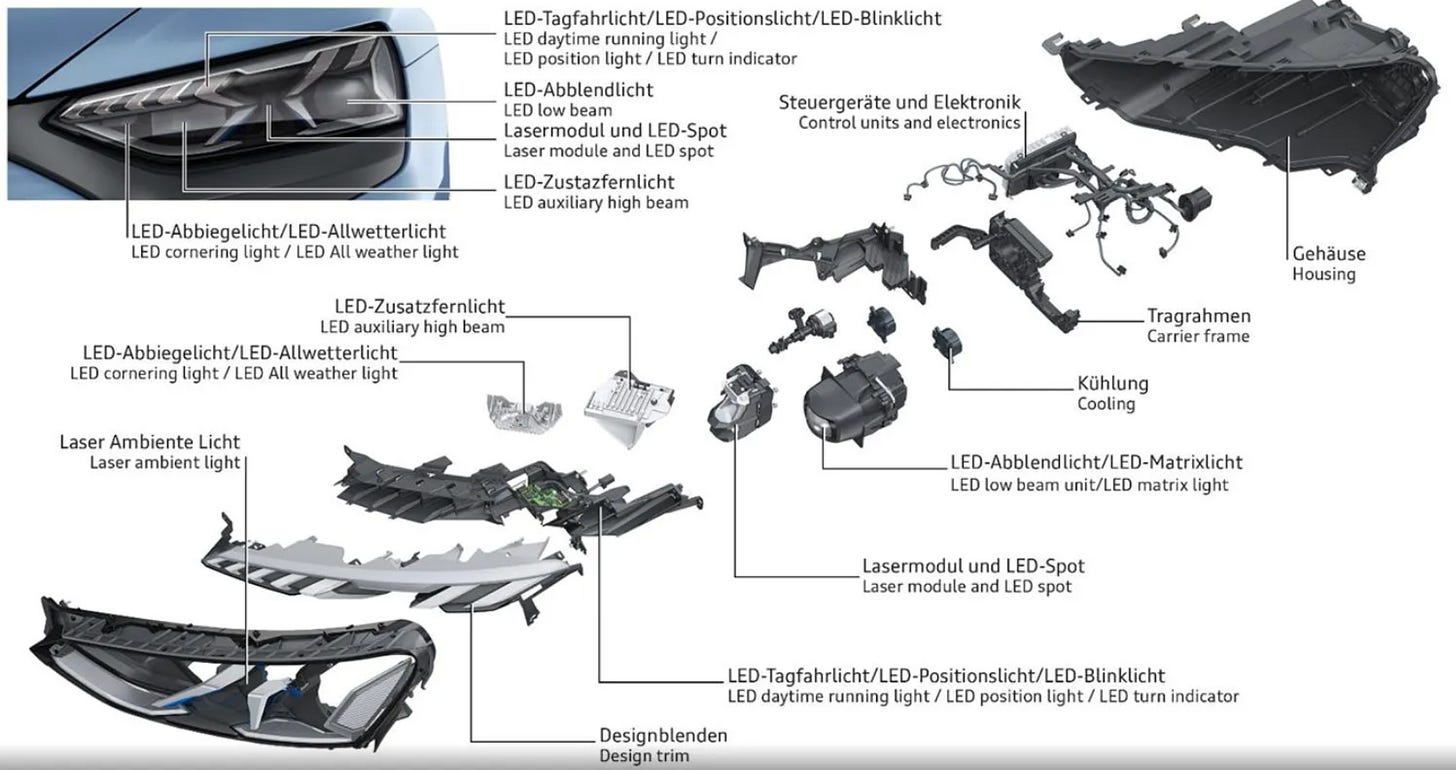
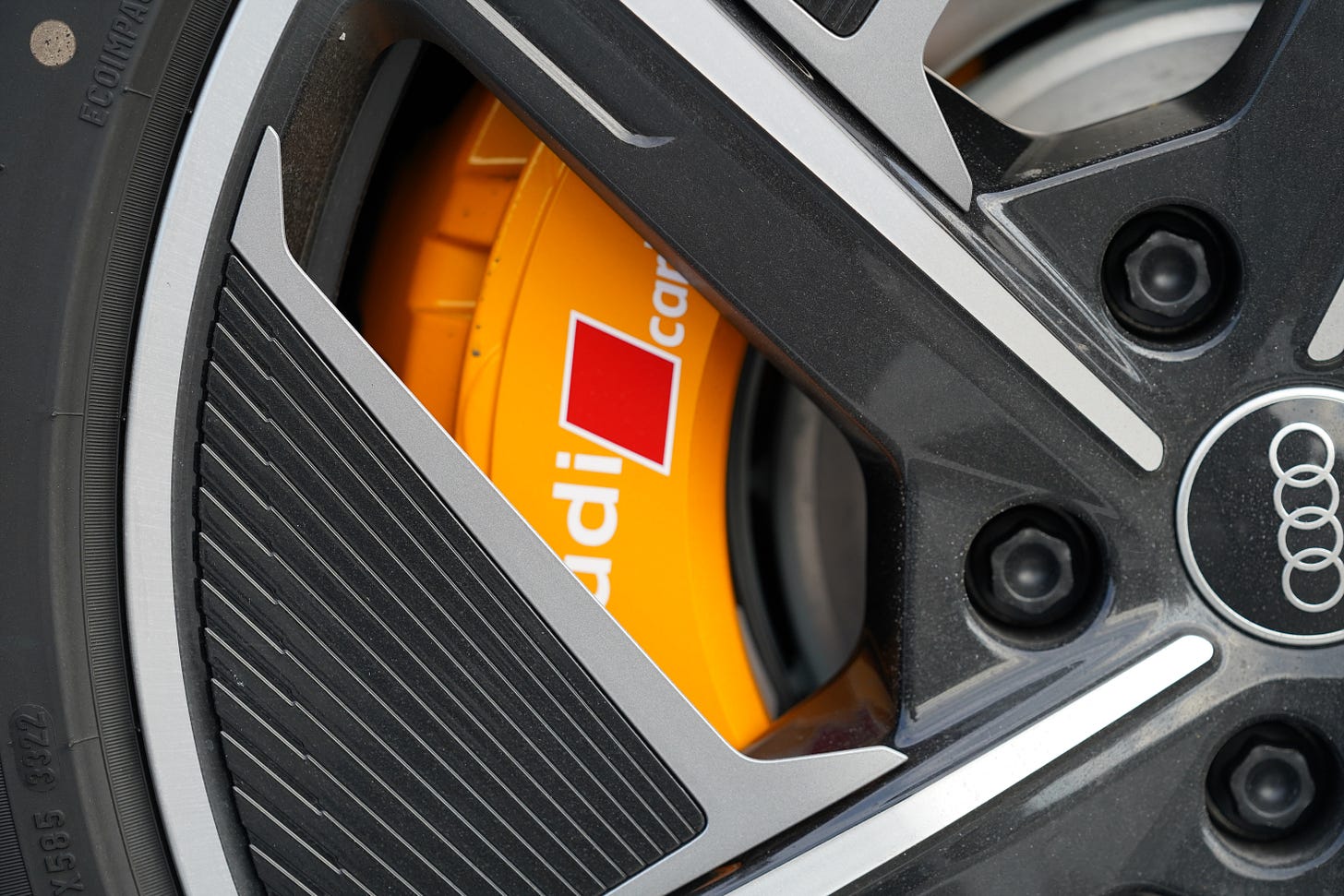

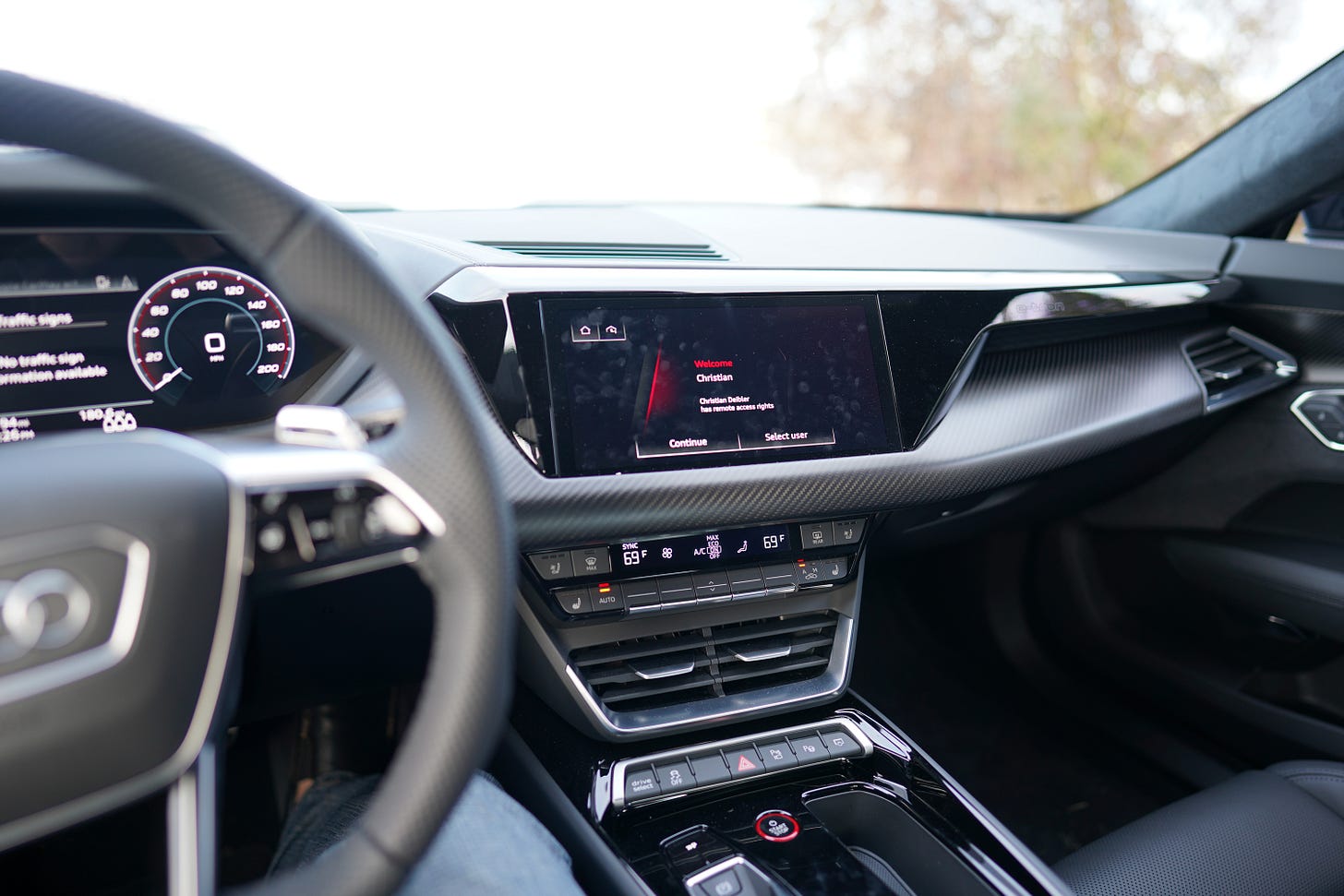
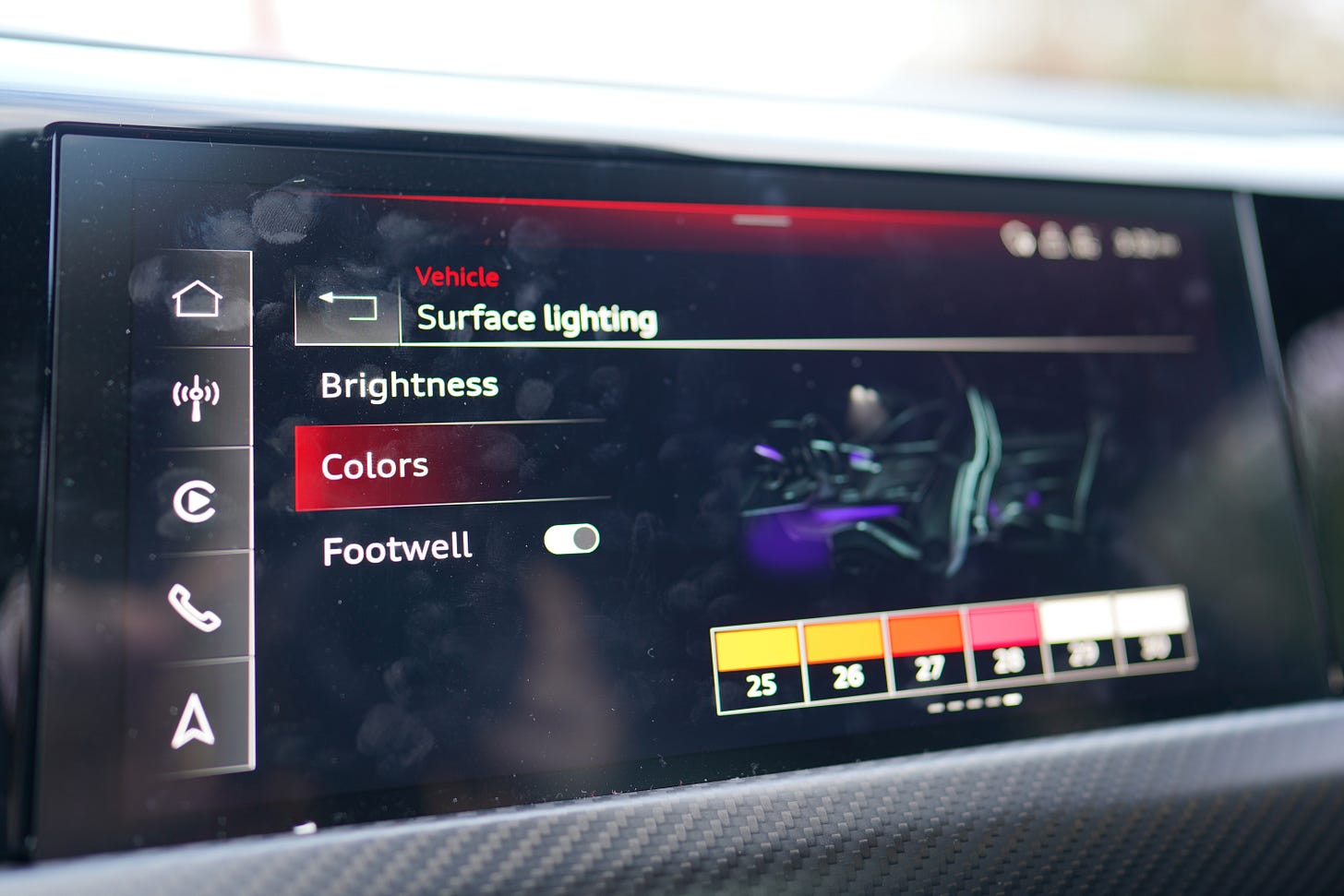


What is EV. for Zooooommmmm?